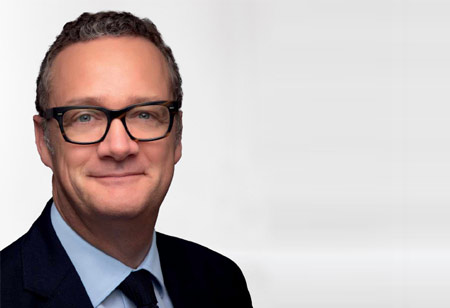Thank you for Subscribing to Healthcare Business Review Weekly Brief

Combining Skill With Intelligent Diagnostics Is A Recipe For Better Patient Outcomes
Healthcare Business Review
Entrusting technology to help arrive at a treatment plan for your patients can be a big leap of faith for some physicians: for those who have always relied on their training,experience, and intuition to make clinical decisions,choosing to rely on telemedicinefor a virtual assessment that willdetermine a clinical pathway is diametrically opposed to everything they have ever known or practiced.
At medical school we are taught about the importance of face-to-face interaction, of asking questions about an individual’s symptoms and of laying hands upon them in order to determine what their medical issue might be, andto then choose appropriate, and preferably non-invasive, tests to achieve an accurate diagnosis. So why would anyone knowingly choose to deviate from what seems to be working? One reason may be that patients are demanding more personalized care - they want a diagnostic and treatment pathway designed specifically for their needs, based on their history and background,their presentation and their particular set of symptoms and physical signs. The ‘one-size-fits-all’ model of healthcare delivery, driving patients down generic care pathways based on a physician’s ‘best guess’ is no longer meeting expectations of the patient population.
Other reasons to consider adopting emerging diagnostic technologies as part of one’s practiceinclude achieving an accurate diagnosis whilst reducing the time to diagnosis, as well as limitingthe need for more invasive techniques that are less convenient and often entail some risk.
So why the resistance to adoption of these technologies? There is an inherent suspicion in the physician community of any techniques that involve a black box (data goes in, a diagnosis comes out the other end), and many of the emerging consumer-facing technologies and even more complex diagnostic technologies are “black boxes.” Physicians like to know about the “why” and the “how.”Telling a physician that a machine is more accurate than they areisn’talways likely to win them over…
But what if you were to tell a physician that their expert opinion could be corroborated and augmented by a machine - in essence “sense-checking” their diagnosis?
The growing prominence of technologies that fall under this umbrella is steadily enabling more personalized care and is highly likely to lead to better patient outcomes.Innovations include everything from virtual visits, to wearables, use of data analytics with artificial intelligence/machine learning-derived algorithms and novel diagnostic approaches that might combine some or all of these aspects. The thing that all of these techniques have in common is that they are attempting to bridge the gap between symptom recognition (whether by patient or by physician) and somehow getting to a definitive diagnosis.
Right now, patients are becoming increasingly engaged in personally-directed, consumer-friendly devices that may be passivelyor actively monitoring activity and biometric indices, whether via smartphones or smart wearables such as watches, rings or other monitors, all of which can generate enormous amounts of data, blurring the boundaries betweenmonitoring for wellness as opposed to strictly healthcare indications.
Such approaches also address the tricky issue of recall bias - we all knowthat none of us are good at remembering our symptoms with accuracy beyond a week or two at best, and intermittent consultations or even clinical-trial based questionnaires or assessments are unlikely to paint an accurate picture; monitoring devices, however,can provide continuous monitoring to obtain granular real-time data that is much more meaningful to a physician who is trying to either arrive at a diagnosis or conduct disease-state monitoring.
"Removing The Barriers To Use Of These Tools And Technologies Can Make Them More Accessible To Physicians"
The same theory is true for imaging technologies that are now integrated with software platforms to automatically detect the things physicians need to know in order to make a decision, by streamlining the process, and crucially eliminating variability, which in turn improves qualityof healthcare delivered and received. Imaging technologies can enable physicians to make a diagnosis when there is a lack of symptom recognition and a lack of information. When physicians need more sensitive and specific information, that’s where tools and technologies like imaging tools combined with intelligent software can have a meaningful impact, althoughthese remain persistently underutilized simply because they are perceived to be more complex to execute.
Removing the barriers to use of these tools and technologies can make them more accessible to physicians. For example, virtual training using simulation tools, or VR goggles to allow self-paced teaching and training, both enable better levels of engagement.Software and user interfaces developed for newer tools such as intravascular imagingare now simpler to interpret with guided workflows and the use of algorithms that provide physicians withmore accurate and actionable data to augment their own knowledge in devising an appropriate care plan.
Acceptance by both the public and the physician community of tools to monitor and drive better healthcare won’t happen overnight, but there is a growing acceptance of digital health tools holisticallyand that can only be a good thing









